Hi! Welcome to my blog. I'll be posting reviews, essays, and short fiction here. Eventually, I hope to offer some freebies and contests, too. Many of these entries will be crossposted to my livejournal, and you're very welcome to comment in either place - I love comments! I'm starting out with a brief essay on something that's been puzzling me. Here goes!
Drinking the Sea at Gaza
This is another poem. I wrote this one in response to a call for works on resistance from Inspired Quill press, and submitted it several months ago. I do not yet know if it will suit their needs, but am putting it here because I believe it deserves to be read. This is again crossposted from my Substack
“Let Justice Roll Down Like Waters.”
In the rain of bombs,
The people drank the sea,
Its salt bitter
On their lips.
The children wailed,
Dry-eyed,
No tears left
In their parched bodies.
And still the bombs fell.
“God brooded over the waters,”
And, in another time,
A slender man marched to the sea
To harvest salt.
In this time,
A boy cried out,
“We had no water,
so God sent us rain!”
The sea is our mother,
The womb of all life.
Her tides
Pulse in our blood;
Her waves
Roar in our ears.
She speaks to us.
Listen.
Her voice is
The susurration
Of water on sand.
Over and over, she says one word:
“Shantih.”
Peace.
Peace.
Peace.
Notes: The title is copied from—or shared with—the title of a book by the great Israeli journalist, Amira Hass. The Bible quotes are from the Books of Amos and Genesis. The quote from a Palestinian child was from a film clip in November or December of 2023. I don’t know his name, and hope he is still alive. The final words are my own hope, but also inspired by T.S. Eliot’s “Waste Land”.
After the Fire: a Poem
I wrote this quite recently, and am crossposting it here from my Substack. May all wars and genocides end! May there be peace, and may we help bring it.
On that day
When people fell through the air
like burning leaves;
when smoke smudged
the bright air
and metal crumpled like paper;
On that day,
we should have learned
a truth that still eludes us:
That each life—
every one—
is of a worth
beyond all naming.
Mary Johnson, 2025
Harfoot Life
As always, this is cross-posted from my livejournal/dreamwidth journal. All citations are taken from the Folio hardcover edition of Lord of The Rings. All linked essays and images are the property of their creators)
Among other criticisms of TROP. I’ve heard it said the Harfoots are not Hobbits. They’re mean! They have no sense of community! They abandon their own and laugh at their misfortunes! I can certainly see how a casual viewer would think this, but is it true the Harfoots we meet in the show bear no relation to the Hobbits we know and love? And is it true—as I’ve also read (Brad Deveraux’s very thought-provoking essay can be found at this link: https://acoup.blog/2022/12/16/collections-why-rings-of-powers-middle-earth-feels-flat/)--that their nomadic way of life makes no sense and has no similarity to actual nomadic cultures?
In both cases, I would answer no. The Harfoots strike me as extremely probable Hobbit ancestors. And their way of life actually tells us a lot about who they are, what they value, and why.
Ship and Stone: Galadriel’s Moral Journey in Rings of Power
There’s been a great deal of discussion about the conversation between little Nerwen and her big brother Finrod at the start of The Rings of Power. Critics are saying things like: Elves know physics! They build boats! They know perfectly well why a ship floats.
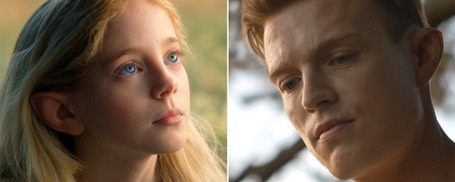
This image is cited in:
https://www.dailyhindnews.com/finrod-in-the-rings-of-power-who-is-galadriels-brother-in-the-lord/ Image of Little Nerwen and her big brother
That, of course, is true. At least one Elf all Tolkien fans know of is a skilled ship builder—and Cirdan is not alone. But, as this article points out, Finrod is not trying to teach his little sister about physics.
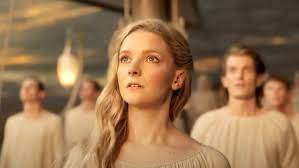
This image is cited in:
https://www.themarysue.com/what-did-finrod-say-to-galadriel-in-the-rings-of-power/
As the author above points out, Finrod has just broken up a fight (some very astute fans noted this is a subtle reference to the Kinslaying and the theft of ships in Tolkien’s legendarium), and he’s trying to teach his small sister how to discern right action. Young Galadriel points out that light can be reflected, and reflected light is not the true light. “How am I to know which light to follow?” she asks.
True to Tolkien?
As usual, crossposted from my livejournal/Dreamwidth account. I’m still catching up, and happy to be back here! I wrote this before The Rings of Power aired, and will shortly be writing a more comprehensive review.
t's been fascinating and disheartening to observe all the noise about the upcoming Rings of Power from Amazon. Honestly, it's a lesson in social media and how toxic it can be. There really does seem to be something horribly toxic about social media these days. People seek reactions, and outrageousness and cruelty get reactions. This happens on all sides of every argument, as far as I can see. It's something I think we all have to work to avoid. But here's what I wanted to say:
It seems to me, when adapting a work of art, there is surface fidelity and deep fidelity. Deep fidelity matters more. To give one example, some fans are outraged by sword-wielding youg Galadriel, but I am really looking forward to seeing her journey. Hers, as much as Frodo's, is a story of redemption and sacrifice. We see her redeemed, a mature and wise woman renouncing power, in LOTR. In The Rings Of Power, she is still young (for an elf) and just at the start of what will be a great character arc. And I think that character arc is there, in Tolkien's words!
Some fans who are slamming the upcomingshow are Tolkien purists. Fans like these, who love the books, would naturally object to any interpretation that wasn't by the letter. I can absolutely understand that point of view.
Bit some of the angriest fans seem to be fans of Jackson's movies. They are claiming Jackson was true to Tolkien and didn't inject politics into the movies. Is this true?
Don't get me wrong--I love the films and think they are a great achievement. But they are not always deeply faithful to Tolkien's books and sometimes they flat-out contradict them.
I've already blogged about this, several years ago when the movies came out. I pointed out that Jackson, for all his virtues as a filmmaker, was blind to the virtue of courtesy. That'st true, but there's more. Here are some very significant alterations:
1. The character assassination of Denethor, who, in the book, was corrupted by pride and despair, but nevertheless loved both his sons and took steps to defend his city.
2. The character assassination of Faramir.
3. The minimizing of Sam's role as ringbearer. In fact, the minimizing of his role altogether.
4. Aragorn's beheading of the Mouth of Sauron.
5. Gandalf's use of violence against Denethor.
Reviews: Somewhat belated thoughts on Megan Whalen Turner’s Return of the Thief and on Avatar: the Last Airbender
t's here! It's here! I read it! And it's every bit as good as I hoped and expected it to be.
"It", of course, is Megan Whalen Turner's series finale, Return of the Thief. Click on the book cover for a link to my Goodreads review!
Just a couple of things to add that I forgot to include in that review:
1. Megan's self-insert! At least, I'm pretty sure she gave herself a walk-on. Those who've read the book, what do you think?
2. Ohmygosh, that direct quotation from Henry V! Very appropriate, and very, very clever.
As I said on Goodreads, I could envision a reader starting with this final book and liking it a lot, but you'd gain so much if you read the previous books first. In fact, I think I'm going to reread them all in order before tackling Return of the Thief a second time. And all of Megan Whalen Turner's books need to be read twice, at least.
Part Two: Avatar: the Last Airbender
The short version here is: R.J., you were right. This is a terrific show.
The slightly longer one is: Prince Zuko, you have given me a logline for querying my book. Here it is: Prince Zuko meets Katniss Everdeen when 16-year-old Kiril risks family, life, and honor to save his little half-brother from slavery.
The characters differ in some fundamental ways, obviously, and so do their stories. But the similarities are actually startling to me. Here we go:
Fantastic Natural History, Part 2: Botanical Edition
As usual, crossposted from my livejournal! I’ve been away from this site for a long time because I lost Sandvox—the app I use to develop it—after getting a new computer. Also, life just got in the way. Anyway, here goes!
Or there maybe ‘tis cloudless night/and swaying beeches bear/the Elven-stars as jewels bright/amid their branching hair” (Sam’’s song, from The Return of the King, page 194 Hardcover Folio edition)
- A What sort of trees are Mallorns?
It was my sister who spotted this, while we were on a hike. We were going through a stand of beech trees, and, in our neck of the woods, anyway, these trees hang onto their leaves throughout the winter, until the new growth comes in the spring. The old leaves are yellow—almost gold—and the bark is smooth and grey—almost silver.

(here's a picture of a beech tree with new leaves that I took on another hike later in the spring. )
Here, Tolkien describes a mallorn tree. It has a grey trunk and yellow leaves. “The branches of the mallorn tree grew nearly straight out from the trunk, and then swept upward;…” (page 389, The Fellowship of the Ring, hardcover Folio edition.) Mallorn trees retain their golden leaves even in the winter—it is late January or early February when the company arrives at Lothlorien. (They leave Rivendell on December 25th.)
Fantastic Natural History, Part 1
As usual, crossposted from my live journal!
“You are not going back out to discover if Louise, magnificent though she be, likes cocoa. Save your experimental zeal for the morning.” (Kate Murry, to her young son Charles Wallace, quoted from memory from A Wind in the Door)
So I’ve been thinking of some beloved books, and real-world equivalents of their plants and animals. I’ll start with Madeleine L’Engle.
What sort of snake is Louise the Larger?
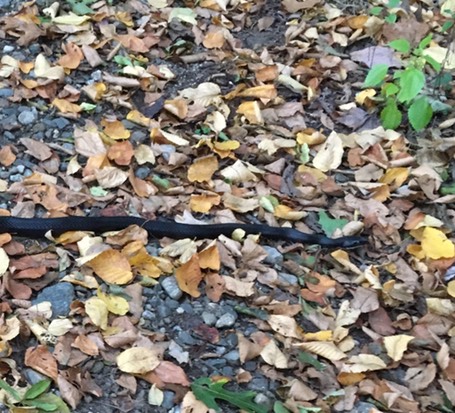
Well, what do we know about Louise?
She lives in a stone wall near an orchard in Northwestern Connecticut. She is fairly tame and friendly toward the young boys who name her. She is big, and black. She’s got a pretty strong grip, winding herself round the children’s arms and shoulders. Of course, there’s a lot more to Louise than that, as fans of A Wind in the Door will know. But those are the basic facts. She’s a black snake, and that’s what she gets called. As a young teen reading the book for the first time, I was convinced she was a black racer, because that was the only black snake I’d ever heard of.
That Monstrous Country (a poem)
Tomorrow, we will be celebrating the feast of the Epiphany—the revelation of God’s love to all nations. On this day in particular, we remember the Magi who journeyed to Bethlehem 2,000 years ago. Tradition has it they came from Persia, an ancient land with a proud and beautiful culture. Now, our so-called president is threatening war with Persia. He is threatening to destroy those cultural sites. He has already murdered a leading general, a man who was fighting ISIS in Iraq and Syria and who supported independence movements in Palestine and Lebanon. I am heartsick. This general is being branded a terrorist, a cruel man, a monster. Well—he was a soldier. I’m sure he was a killer. But a monster?
Two years ago, I wrote a poem about monsters and monstrosities. I’ve posted it already to my livejournal. Here it is. I pray for peace, freedom, and justice for all people. More than justice, I pray for God’s mercy and love. We need mercy very badly.
God bless Australia, too. I am so, so sad about the fires.
Sacrifice of Angels (thoughts on DS9’s Past Tense)
I have been rereading Carol Plum Ucci’s excellent teen novel, “What Happened to Lani Garver”, and that caused me to start considering angels, and what they really are.

(Epstein’s Saint Michael the archangel, Coventry Cathedral)
It is now October, 2019. In a little less than five years, as all passionate Niners know, the Bell riots will take place in San Francisco. Government troops will open fire on impoverished, homeless citizens and kill hundreds.
Showrunner Ira Steven Behr commented that, as they were filming the show, politicians were actually talking about putting homeless people in sanctuary districts—ghettos like those we see in these episodes. He was appalled at how close to real life a science fiction story became.
In Donald Trump’s America, where children are being torn from their parents’ arms and locked in cages, these episodes seem even more relevant than they were thirty years ago. The world of the Bell Riots and the sanctuary districts is a world of extreme capitalism, casual racism, and great wealth juxtaposed with dire poverty. It’s no wonder Past Tense, in spite of some weaknesses, is among the most admired of DS9 episodes.
The Listening Heart and the Artist’s Pen
In a modern fantasy series (Chronicles of Ancient Darkness, by Michelle Paver), the young hero is called the listener. The author explains that this is because the boy Torak is an expert hunter. Even though we humans are very visual, the boy perceives more about the natural world by listening than he does by looking.
I’ve quoted this before, but I think it’s pretty powerful—and true! So here it is again: “For when you come to think of it, the only way to love a person is…by listening to them…(Brenda Ueland, from the paperback edition of If you Want to Write, page 6).
This past Friday, my sisters and got to see a wonderful example of what can happen when someone truly listens to another human being. It was at the Tolkien exhibit at the Morgan Library.
Needless to say, the exhibit was fantastic. As one attendee said, it was hard to believe a single human being could be so talented in so many different ways. I loved the photos of the family, the doctoral gown from Oxford on display along with a photo of Tolkien wearing it, and the insights into his creative process. And then the artwork! My twin sister really loved Tolkien’s abstract paintings; I loved his maps and charts; but our younger sister loved best a tiny painting Tolkien made for his son.
Author Interview with Amanda McCrina!
Amanda McCrina, Author of His Own Good Sword and Blood Road, has a new book coming out tomorrow! It’s Blood Oath, the sequel to Blood Road, and Amanda was kind enough to answer some interview questions via email. BTW, if you haven’t read her books and are a Megan Whalen Turner fan, you should give them a try!
(Amanda’s author picture. Click on it for her website!)
What sources did you use to create Tasso? Is it based on a real place?
Tasso isn’t based on one particular place, though it’s probably closest to the North Africa of late antiquity. The indigenous people groups of Tasso are drawn loosely from the ancient Berbers. The enigmatic, unnamed female chieftain of the Mayaso tribe in Blood Road and Blood Oath is very loosely inspired by Dihya, the seventh-century Berber warrior queen, and the relatively high status of women in traditional Berber societies, such as the Tuareg, was something I really wanted the tribes of Tasso to reflect. Then again, the Tegeno people, whom we meet in Blood Oath and who inhabit the lands just north of Tasso, are (again, loosely) based on the Sarmatian tribes of the Pontic steppe—so really Tasso is just a very general reflection of several different places around the ancient Mediterranean/Black Sea rim.
Good Friday: a poem for the people of Gaza
I could, I suppose, link to the video that this poem is a response to. But—I’d rather not. It is so utterly horrifying to me. The poem was written during the Easter Vigil, which seems appropriate. May there be peace, and may we help to bring it.
“Good Friday"
That woman who fell,
Cut down
Clutching the flag
Of the land she loved--
She fell like a flower,
Cut down like the grass.
Remember her.
Remember,
The grass dies.
It will rise again.
She will rise again.
(Written during the Easter vigil, Mary Johnson)
Damsels, Crones, and Heroines: a Review of Disney’s Wrinkle in Time

On Damsels, Crones, and Heroines—a review of A Wrinkle in Time
I was apprehensive about the new movie; I’ve loved the book almost my entire life, and, when I saw the trailers, there was almost nothing I recognized. Still, I was bound to see it. At the very least, it seemed to be well cast and visually interesting.
It was both those things. The little girl who played Meg could hardly have been better, and the boys were good, too. The little fellow who played Charles Wallace was a charmer! And there was a bit more of the book in the movie plot than I’d expected. Still, the movie is not the book. I’m not sure I could even call it an interpretation of the book. As fine as the young actors are, as good as the effects are, the story was altered too much.
I could try to compare and contrast book and movie, point for point, as has been done for the earlier movie, But I’m not sure I could; I’ve only seen the movie once. Instead, I’m going to focus on three key words and show how they are changed in the film. The words are damsel, crone, and heroine. I’ll then take a look at the spirituality of book and movie through the lenses of these words. (Yes, I know. Words don’t have lenses. But damsels, crones, and heroines do.)
“A Wrinkle in Time” filmmaker’s challenge
As those of you who read this blog regularly know, I’m apprehensive about this movie in spite of its splendid cast (young Storm Reid looks great as Meg!). Some of the comments I’ve read make me wonder if anyone involved with the film has actually read the book? But, of course, I’m going to see it anyway. Just six more days to go!
My sister told me Disney was offering a filmmaker’s challenge, and she urged me to enter, so I did. I knew I would not win; the rules were very stringent, I had three days to complete my film before the deadline, and, to misquote Dr. McCoy, I’m a writer, not a filmmaker. But I am proud of my little film in spite of its rough edges. Here it is.
Another Short Story!
Sick Lit accepted the story I wrote for their “Future” prompt. You were to imagine you’d been in a coma for 500 years, and write about what happened when you woke up. Click on the link to read Among the Stars!
The Merchants of Death
It’s been a long time since I updated here: sorry! I am crossposting an entry from my live journal, with a short addition. It’s the clip above, in which a basically honest bartender gets involved with some very shady people out of greed.
Now to the blog post. A couple of weeks ago, my sister and I had the pleasure of going to the Simmons/Horn book Symposium. The theme was resistance, so it was timely, to say the least. I got to meet Richard Peck again! And he was on a panel with the winner for YA literature, Angie Thomas, author of The Hate U Give. This is a book you need to read carefully, without skimming or skipping around. When I first began reading it, I was doing both those things. And it seemed too polemical, too much a retelling of current events. When I read more slowly, though, I really appreciated the story, the characters, and the craft Thomas uses in bringing them into a whole. It’s pretty devastating, actually, but not without hope.
Since she is a woman of color, Thomas is able to do some things a white writer could not. She presents her African-American teen characters with great empathy and nuance. The boy who dies in the story, Khalil, is by no means a bad kid. But he does make mistakes. He gets involved in gang activity, though he doesn’t want to and avoids becoming a gang member. When the police pull him over, he argues and is slow to cooperate. it’s nevertheless quite clear that Khalil and his friend Starr, the main character, are unarmed children who pose no threat to anyone. Khalil dies, anyway.
Short Story! “Sorrow: A Retelling"
I am happy and proud to say that Sick Lit Magazine accepted one of my stories. It was published today, and you can read it here!
Blog Tour - Blood Road by Amanda McCrina (plus Owlbox giveaway: details below!)

Title: BLOOD ROAD
Author: Amanda McCrina
Pub. Date: April 25, 2017
Publisher: Month9Books
Format: Paperback, eBook
Pages: 329
Find it: Goodreads | Amazon | B&N | TBD
1. Publisher’s summary:
Nineteen-year-old Torien Risto has seen dissidents dealt with before. He knows the young local girl who just knifed him will hang for assaulting an Imperial officer, unless he can stop it.
Someone inside the provincial government is kidnapping Imperial citizens and selling them across the desert to the salt mines, silencing anyone who tries to intervene. The girl’s brother is one of those who has been taken. Rejected by the corrupt courts, she’s waging a personal war against the Empire.
Determined to save her life, Torien sets out in search of answers on the Salt Road, the ancient trade route running deep into the heart of a desert—territory claimed by the hostile Mayaso tribe.
Now, Torien is no longer sure where his own loyalty lies, or how far he will go to break the cycle of tyranny, political bullying, and social injustice in an empire that seals its borders in blood.
On Adaptations (cross-posted from my live journal)
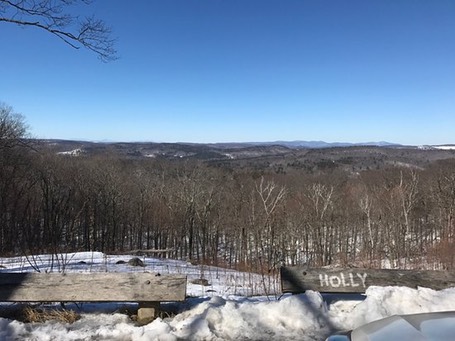
This photo of Goshen is courtesy of TripAdvisor
So they are again trying to film one of my childhood favorites, Madeleine L’Engle’s A Wrinkle in Time. Honestly, it’s a book I still love, and I am filled with trepidation. Oh, I’ll go see it when it comes out next year. I’m almost certain to, unless it’s completely panned. But the Canadian TV movie from ten or fifteen years ago was a very mixed bag, and I’m very much afraid this version will be, too.
Why? I admit I was a little startled when I read that the director insisted on having primarily people of color in the cast. And then I thought about it. It does change the story, which is set in rural New England in the early 1960s. African Americans really didn’t live in small New England farming villages after WWII. They did before the war, and the loss of this population is one of many American tragedies and injustices. But_
One of the points of the story, and, indeed, of the series, is that Meg’s family are outsiders. Making Kate Murry of African descent, and her children mixed race, is a good way of emphasizing this. And these are beautiful children! If they can act the parts and get the characters across, it doesn’t matter in the least that they don’t look like the characters in the book.

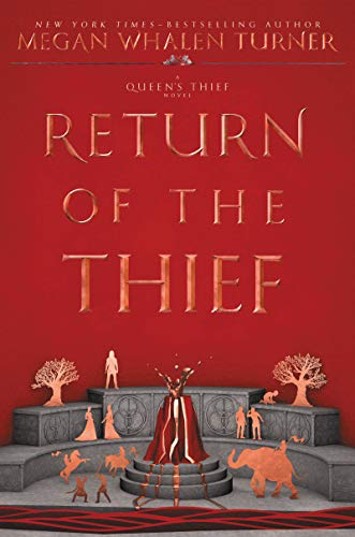
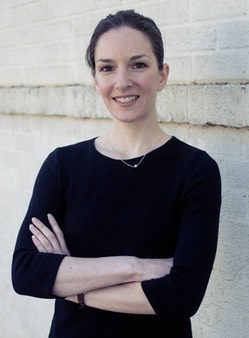
View Comments